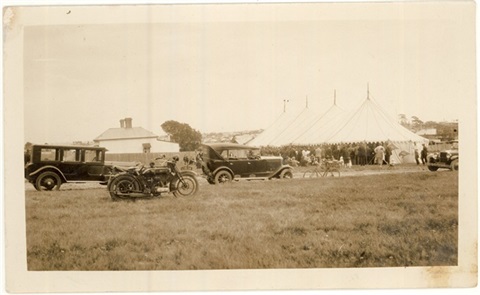Reservoir

In 1837 Robert Hoddle surveyed the present day Preston area and its surrounds forming the Jika Jika parish. The parish of Keelbundoora to the north was subsequently surveyed by John Helder Wedge and in 1838 the 990 acres of Keelbundoora 12 (K12) and adjacent 885 acres (K11) were sold to the land speculator Thomas Alexander during Melbourne’s Land Boom. These allotments, along with K13, would later be subdivided to form the suburb known as Reservoir (see map p.17 Carroll and Rule). The land was deemed unsuitable for speculation and sold on in 1840 to Captain Sylvester John Brown who again sold it a month later to Englishman Thomas Dyer Edwardes. The oldest hotel in northern Darebin, The Rose, Shamrock and Thistle (Rose Shamrock) opened its doors for the first time in 1854. In 1864 the reservoir which would later provide inspiration for the suburb’s name was built on the Yan Yean pipeline which carried water into Melbourne. 2 others were built in 1909 and 1913. The Fitzroy and Whittlesea Railway opened in 1884 and Reservoir Station was built. In 1904 the line was eventually linked directly to the city via Clifton Hill.
Early subdivision plans by Edwardes failed right up until the 1890s due to remoteness from settlement. Eventually Edwardes did manage to lure some “stout hearted” settlers to purchase land in his estates and in 1914 he donated 34 acres of his Leamington Estate to be used as a public park. Once the land was given to the Council, they started planting trees and commenced planning a dam and a weir. The State War Council approached the Council and successfully lobbied to employ returning servicemen to build the weir and retaining wall which form the lake. Edwardes Lake was officially opened in 1920 and remains popular to this day.
By the 1920s Reservoir could be at last be considered a suburb. In 1921 Preston and its surrounds had the highest population density of any shire in Victoria which again trebled by 1926. The increase can be attributed to the increased birth rates as a result of the Baby Boom, people moving away from the crowded inner suburbs and an influx of overseas immigrants. This unprecedented growth resulted in vast improvements in public transport and the proliferation of shops in Edwardes and Spring Streets. However up until the 1960s vast areas in the north west of Reservoir were still completely undeveloped and the dominant architecture in the areas is standard brick homes, weatherboard homes, and a high number of new developments as the suburb continues to sprawl northward.
eMelbourne - the city past and present (n.d.). from http://www.emelbourne.net.au
Carroll, Brian & Rule, Ian (1985). Preston: an Illustrated History. Preston: City of Preston.
Dingle, Tony & Doyle, Helen (2003). Yan Yean : a history of Melbourne's early water supply. Melbourne: Public Record Office.
Edge, Gary (2004). Surviving the six o’clock swill: a history of Darebin’s hotels. Melbourne: Darebin Libraries.
Forster, Harley W. (1968). Preston Lands and People. Melbourne: Cheshire.